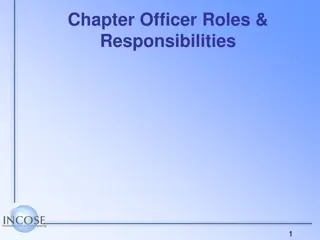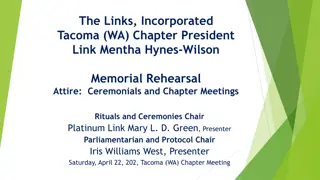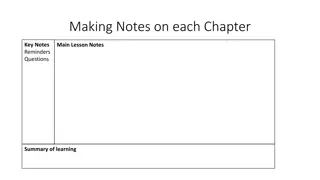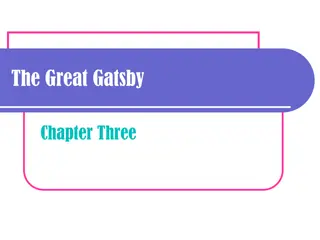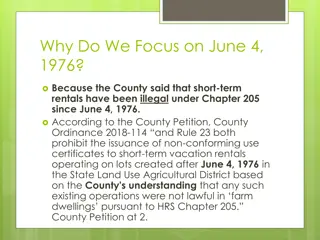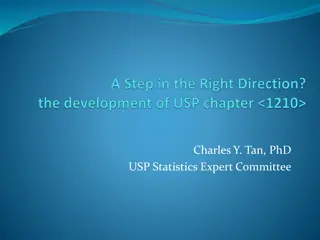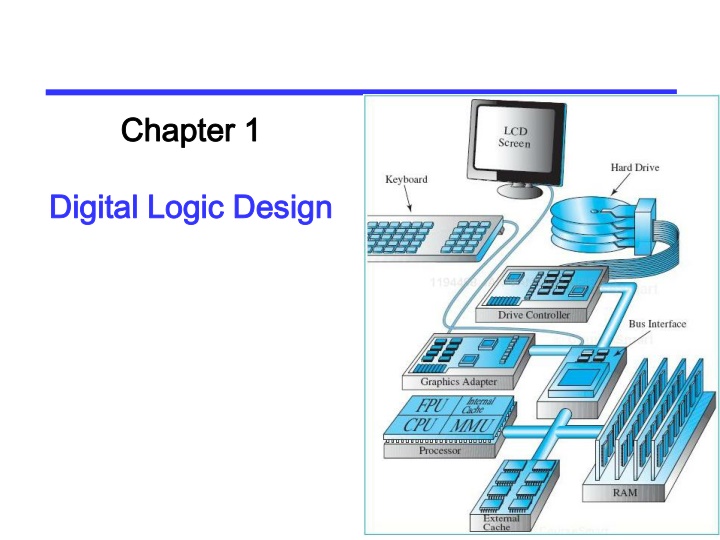
Digital Logic Design Overview: Representing Information in Digital Systems
Explore the fundamentals of digital logic design, delving into the representation of information in digital systems. Learn about digital computers, logic gates, binary code, and more essential concepts. Dive into the world of electrical engineering and the building blocks of complex electronic components.
Download Presentation

Please find below an Image/Link to download the presentation.
The content on the website is provided AS IS for your information and personal use only. It may not be sold, licensed, or shared on other websites without obtaining consent from the author. If you encounter any issues during the download, it is possible that the publisher has removed the file from their server.
You are allowed to download the files provided on this website for personal or commercial use, subject to the condition that they are used lawfully. All files are the property of their respective owners.
The content on the website is provided AS IS for your information and personal use only. It may not be sold, licensed, or shared on other websites without obtaining consent from the author.
E N D
Presentation Transcript
Chapter Chapter 1 1 Digital Digital Logic Design Logic Design 1
Overview Digital Computer and Digital Logic Information Representation Number Systems [binary, octal and hexadecimal] Base Conversion Decimal Codes [BCD (binary coded decimal)] Alphanumeric Codes Parity Bit Gray Codes 2
Digital Computer A digital computer stores data in terms of digits (numbers) and proceeds in discrete steps from one state to the next. The states of a digital computer typically involve binary digits which may take the form of the presence or absence of magnetic markers in a storage medium , on-off switches or relays. In digital computers, even letters, words and whole texts are represented digitally. 3
Digital Logic Digital Logic is the basis of electronic systems, such as computers and cell phones. Digital Logic is rooted in binary code, a series of zeroes and ones each having an opposite value. This system facilitates the design of electronic circuits that convey information, including logic gates. Digital Logic gate functions include and, or and not. The value system translates input signals into specific output. Digital Logic robotics and other electronic applications. facilitates computing, 4
Digital Logic Digital Logic Design is foundational to the fields of electrical engineering engineering. Digital complex electronic components that use both electrical and computational These characteristics current, logical function, protocol and user input. Digital Logic Design is used to develop hardware, such as circuit boards and microchip processors. This hardware processes user input, system protocol and other navigational systems, cell phones or other high- tech systems. and designers computer build Logic characteristics. involve may power, data in computers, 5
Digital Logic Deals with building blocks of digital systems ? (Intel) 6
INFORMATION REPRESENTATION in Digital Systems- Signals Information variables represented by physical quantities. For digital systems, the variables take on discrete values. Two levels or binary values are the most prevalent values in digital systems. Binary values are represented abstractly by: digits 0 and 1 words (symbols) False (F) and True (T) words (symbols) Low (L) and High (H) and words Off and On. 7
Binary Values: Other Physical Quantities What are other physical quantities that represent 0 and 1? Logic Gates, CPU: Voltage Disk Hard_disk_2-5inch Magnetic Field Direction CD 67417-label-cd Surface Pits/Light Dynamic RAM Electrical Charge 8
Number Systems The numeric system we use daily is the decimal system, but this system is not convenient for machines since the information is handled codified in the shape of on or off bits; this way of codifying takes us to the necessity of knowing the positional calculation which will allow us to express a number in any base where we need it. 9
Number Systems A base of a number system or radix defines the range of values that a digit may have. In the binary system or base 2, there can be only two values for each digit of a number, either a "0" or a "1". In the octal system or base 8, there can be eight choices for each digit of a number: "0", "1", "2", "3", "4", "5", "6", "7". 10
Number Systems In the decimal system or base 10, there are ten different values for each digit of a number: "0", "1", "2", "3", "4", "5", "6", "7", "8", "9". In the hexadecimal system, we allow 16 values for each digit of a number: "0", "1", "2", "3", "4", "5", "6", "7", "8", "9", "A", "B", "C", "D", "E", and "F". Where A stands for 10, B for 11 and so on. 11
Conversion among Radices Convert from Decimal to Any Base Let s think about what you do to obtain each digit. As an example, let's start with a decimal number 1234 and convert it to decimal notation. To extract the last digit, you move the decimal point left by one digit, which means that you divide the given number by its base 10. 12
Conversion among Radices Convert from Decimal to Any Base 1234/10 = 123 + 4/10 The remainder of 4 is the last digit. To extract the next last digit, you again move the decimal point left by one digit and see what drops out. 123/10 = 12 + 3/10 The remainder of 3 is the next last digit. You repeat this process until there is nothing left. Then you stop. 13
Conversion among Radices Convert from Decimal to Any Base In summary, you do the following: 14
Conversion among Radices Now, let's try a nontrivial example. Let's express a decimal number 1341 in binary notation. Note that the desired base is 2, so we repeatedly divide the given decimal number by 2. 15
Conversion among Radices Let's express the same decimal number 1341 in octal notation. 16
Conversion among Radices Let's express the same decimal number 1341 in hexadecimal notation. 17
Conversion among Radices In conclusion, the easiest way to convert fixed point numbers to any base is to convert each part separately. We begin by separating the number into its integer and fractional part. The integer part is converted using the remainder method, by using a successive division of the number by the base until a zero is obtained. At each division, the reminder is kept and then the new number in the base r is obtained by reading the remainder from the last remainder upwards. 18
Conversion among Radices The conversion of the fractional part can be obtained by successively multiplying the fraction with the base. If we iterate this process on the remaining fraction, then we will obtain successive significant digit. This methods form the basis of the multiplication methods of converting fractions between bases. 19
Conversion among Radices Example. Convert the decimal number 3315 to hexadecimal notation. What about the hexadecimal equivalent of the decimal number 3315.3? 20
Conversion among Radices Convert From Any Base to Decimal Let's think more carefully what a decimal number means. For example, 1234 means that there are four boxes (digits); and there are 4 one's in the right-most box (least significant digit), 3 ten's in the next box, 2 hundred's in the next box, and finally 1 thousand's in the left-most box (most significant digit). The total is 1234: 21
Conversion among Radices Convert From Any Base to Decimal Thus, each digit has a value: 10^0=1 for the least significant digit, increasing to 10^1=10, 10^2=100, 10^3=1000, and so forth. Likewise, the least significant digit in a hexadecimal number has a value of 16^0=1 for the least significant digit, increasing to 16^1=16 for the next digit, 16^2=256 for the next, 16^3=4096 for the next, and so forth. Thus, 1234 means that there are four boxes (digits); and there are 4 one's in the right-most box (least significant digit), 3 sixteen's in the next box, 2 256's in the next, and 1 4096's in the left- most box (most significant digit). The total is: 1*4096 + 2*256 + 3*16 + 4*1 = 4660 22
Conversion among Radices Convert From Any Base to Decimal In summary, the conversion from any base to base 10 can be obtained from the formula : Where b is the base, di the digit at position i, m the number of digit after the decimal point, n the number of digits of the integer part and X10 is the obtained number in decimal. This form the basic of the polynomial method of converting numbers from any base to decimal 23
Conversion among Radices Example. Convert 234.14 expressed in an octal notation to decimal. 2*82 + 3*81 + 4*80+1*8-1 + 4*8-2 = 2*64 +3*8 +4*1 +1/8 +4/64 =156.1875 Example. Convert the hexadecimal number 4B3 to decimal notation. What about the decimal equivalent of the hexadecimal number 4B3.3? Convert 234.14 expressed in an octal notation to decimal. 24
Conversion among Radices Relationship between Binary - Octal and Binary-hexadecimal As demonstrated in Table 1.1, there is a direct correspondence between the binary system and the octal system, with three binary digits corresponding to one octal digit. Likewise, four binary digits translate directly into one hexadecimal digit. 25
Conversion among Radices Table 1.1 26
Conversion among Radices With such relationship, In order to convert a binary number to octal, we partition the base 2 number into groups of three starting from the radix point, and pad the outermost groups with 0 s as needed to form triples. Then, we convert each triple to the octal equivalent. For conversion from base 2 to base 16, we use groups of four. Consider converting 101102 to base 8: 101102 = 0102 1102 = 28 68 = 268 Notice that the leftmost two bits are padded with a 0 on the left in order to create a full triplet. 27
Conversion among Radices Use of HEX system Short hand notation of large binary numbers: Each HEX digits can be represented by exactly 4 bits (16=24) Thus (10011110.0101)2 9 E . 5 9 E . 5 Conversion from binary to HEX and HEX to binary is very easy: (10011101)2 = ( )16 (1010110110.11)2 = ( )16 B39.716 = ( )2 28
Conversion among Radices Now consider converting 101101102 to base 16: 101101102 = 10112 01102 = B16 616 = B616 (Note that B is a base 16 digit corresponding to 1110. B is not a variable.) The conversion methods can be used to convert a number from any base to any other base, but it may not be very intuitive to convert something like 513.03 to base 7. As an aid in performing an unnatural conversion, we can convert to the more familiar base 10 form as an intermediate step, and then continue the conversion from base 10 to the target base. As a general rule, we use the polynomial method when converting into base 10, and we use the remainder and multiplication methods when converting out of base 10. 29
Conversion from Decimal to new Radix To Convert the Integral Part: Repeatedly divide the number by the new radix and save the remainders. The digits for the new radix are the remainders in reverse order of their computation. To Convert the Fractional Part: Repeatedly multiply the fraction by the new radix and save the integer digits that result. The digits for the new radix are the integer digits in order of their computation.If the new radix is > 10, then convert all integers > 10 to digits A, B, 30
Conversion among Radices Example: convert (325.65)10 to hex Integer part: 32510 = ( . )16 325/16 = 20 and rem = 5 20/16 = 1 and rem = 4 1/16 = 0 and rem = 1 Least significant digit Most significant Fractional part: .65 Thus 32510 = 14516 0.65x16 = 10.4 thus int = 10= A 0.4x16 = 6.4 thus int = 6 0.4x16 = 6.4 thus int = 6 Etc. Most significant Least significant Thus .6510 = A6616 325.6510 = 145.A6616 31
Example: Convert 54.687510 To Base 2 Convert 54 to Base 2 Convert 0.6875 to Base 2: Join the results together with the radix point: 32
Exercises Hexadecimal to Octal: Octal to Binary to Hexadecimal 6 3 5.1778 = ( )16 Convert 54.687510 To Base 2 Convert 54 to Base 2 Convert 0.6875 to Base 2 Combine the result (146.A)16 = ( ? )10 (247.4)8 = ( ? )10 3A.5 16 = ( )8 35
Numeric Complements The radix complement of an n digit number y in radix b is, by definition bn y Adding this to x results in the value x + bn y or x y + bn. Assuming y x, the result will always be greater than bnand dropping the initial '1' is the same as subtracting bn, making the result x y + bn bn or just x y, the desired result. The radix complement is most easily obtained by adding 1 to the diminished radix complement, which is (bn 1) y 36
Numeric Complements Since (bn 1) is the digit b 1 repeated n times (because bn 1 = bn 1n= (b 1)(bn -1 + bn -2 + ... + b + 1) = (b 1) bn -1 + ... + (b 1), see also binomial diminished radix complement of a number is found by complementing each digit with respect to b 1 (that is, subtracting each digit in y from b 1). Adding 1 to obtain the radix complement can be done separately, but is most often combined with the addition of x and the complement of y. numbers), the 37
Numeric Complements In the decimal numbering system, the radix complement is called the ten's complement and the diminished radix complement the nines' complement. In binary, the radix complement is called the two's complement and the diminished radix complement the ones complement. The naming of complements in other bases is similar. 38
Numeric Complements Radix Complement 10 s Complement Finding the 5 digit 10 s complement of 1357 radix5 100000 Initial Value 01357 10 s Complement 98643 The 5 digit 10 s complement of 1357 is 98643 1.2.2 2 s Complement Finding the 8 digit 2 s complement of 01101100 radix8 100000000 Initial Value 01101100 2 s Complement 10010100 The 8 digit 2 s complement of 01101100 is 10010100 39
Numeric Complements Diminished Radix Complement 9 s Complement Finding the 5 digit 9 s complement of 1357 All 9 s Initial Value 9 s Complement The 5 digit 9 s complement of 1357 is 98642 1 s Complement Finding the 8 digit 1 s complement of 01101100 All 1 s Initial Value 9 s Complement The 8 digit 1 s complement of 01101100 is 10010011 99999 01357 98642 11111111 01101100 10010011 40
Numeric Complements Decimal Example To subtract a decimal number y from another number x using the method of complements, the ten's complement of y (nines' complement plus 1) is added to x. Typically, the nines' complement of y determining the complement of each digit. The complement of a decimal digit in the nines' complement system is the number that must be added to it to produce 9. The complement of 3 is 6, the complement of 7 is 2, and so on. is first obtained by 41
Numeric Complements Given a subtraction problem: 873 -218 The nines' complement of y (218) is 781. In this case, because y is three digits long, this is the same as subtracting y from 999. (The number of 9's is equal to the number of digits of y.) Next, the sum of x, the nines' complement of y, and 1 is taken: 873 (x) + 781 (complement of y) + 1 (to get the ten s complement of y) 1655 The first "1" digit is then dropped, giving 655, the correct answer. (x) (y) 42
Numeric Complements If the subtrahend has fewer digits than the minuend, leading zeros must be added which will become leading nines when the nines' complement is taken. For example: 48032 (x) - 391 (y) becomes the sum: 48032 (x) + 99608 (nines' complement of y) + 1 (to get the ten's complement) 147641 Dropping the "1" gives the answer: 47641 43
Numeric Complements Binary Example The method of complements is especially useful in binary (radix 2) since the ones' complement is very easily obtained by inverting each bit (changing '0' to '1' and vice versa). And adding 1 to get the two's complement can be done by simulating a carry into the least significant bit. 44
Numeric Complements For example: 01100100 - 00010110 becomes the sum: 01100100 + 11101001 + 1 101001110 Dropping the initial "1" gives the answer: 01001110 (equals decimal 78) (x, equals decimal 100) (y, equals decimal 22) (x) (ones' complement of y) (to get the two's complement) 45
Signed fixed Point Numbers So far we have considered only the representation of unsigned fixed point numbers. There are four different ways of representing signed numbers that are commonly used: sign-magnitude one s complement two s complement, excess notation. 46
Signed fixed Point Numbers Signed Magnitude Representation In the signed-magnitude system, a number consists of a magnitude and a symbol indicating whether the magnitude is positive or negative. Thus, we interpret decimal numbers +98, -57, +123.5, and - 13 in the usual way, and we also assume that the sign is + if no sign symbol is written. 48
Signed fixed Point Numbers The signed-magnitude system is applied to binary numbers by using an extra bit position to represent the sign (sign bit) Most significant bit (left most bit) is used as a sign 0 for + 1 for - 49
Signed fixed Point Numbers Consider representing (+12)10and ( 12)10 in an eight-bit format: (+12)10 = (00001100)2 ( 12)10 = (10001100)2 The negative number is formed by simply changing the sign bit in the positive number from 0 to 1. Notice that there are both positive and negative representations for zero: +0= 00000000 and -0= 10000000. 50

